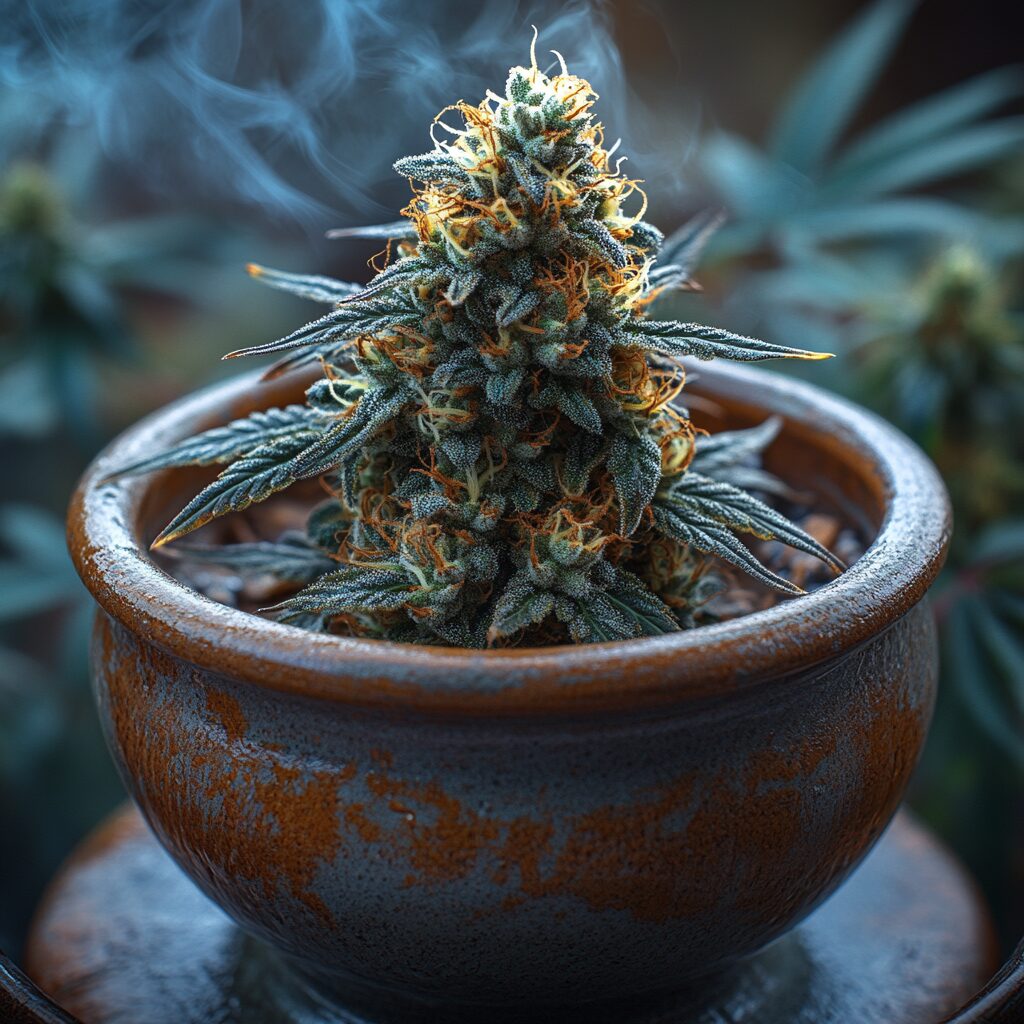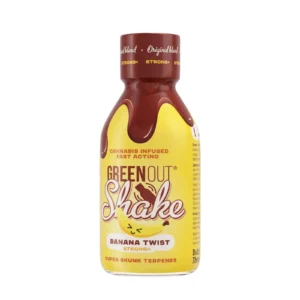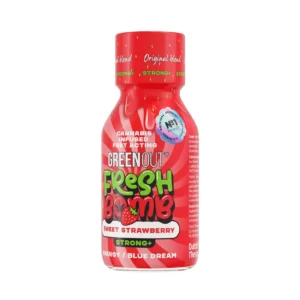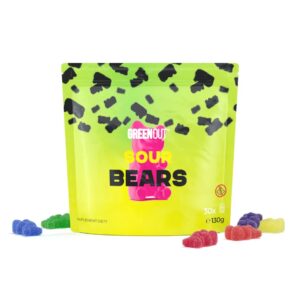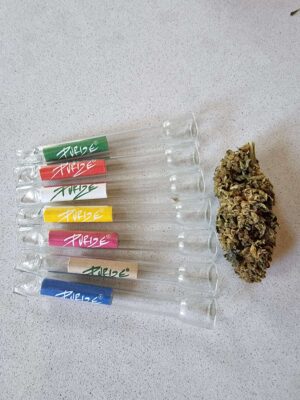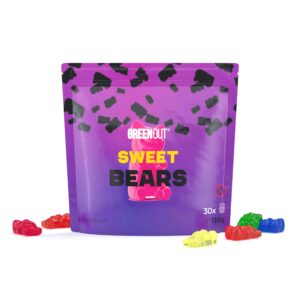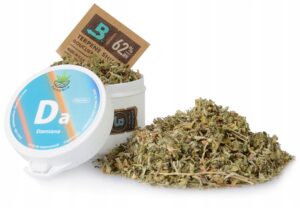Cannabis decarboxylation: A comprehensive guide to the process and its importance
Cannabis decarboxylation is a key process that transforms raw cannabis into a form ready for consumption, increasing its effectiveness and bioavailability. Without this step, cannabinoids such as THC and CBD remain in less active acidic forms, limiting their potential effects.
In this article, we'll discuss in detail what decarboxylation is, why it's so important, how to perform it properly, and what are the best practices to get optimal results. If you want to learn how to get the most out of cannabis, this guide is for you!
What is marijuana decarboxylation?
Decarboxylation is a chemical process that involves heating raw cannabis to remove carboxyl groups (-COOH) from cannabinoids such as THCA (tetrahydrocannabinolic acid) or CBDA (cannabidiolic acid). As a result, carbon dioxide (CO2) is released and the cannabinoids are converted into their active forms, such as THC and CBD. This process is necessary for the cannabinoids to become psychoactive or therapeutic, as the acidic forms have limited biological activity.
For example, THCA does not produce psychoactive effects, but after decarboxylation it is converted into THC, which is responsible for the characteristic effects of marijuana. Decarboxylation is the basis for preparing cannabis for the production of oils, edibles, infusions or vaporization products.
Why is decarboxylation important?
Decarboxylation plays a key role in maximizing the potential of cannabis. First, it increases the activity of cannabinoids - THC is up to 40 times more effective than THCA in producing psychoactive and therapeutic effects.
Second, it improves the body's absorption of cannabinoids, resulting in faster and more intense effects. Third, the process eliminates undesirable compounds such as chlorogenic acid, improving the safety and quality of hemp products.
Without decarboxylation, products such as oils and edibles would have much weaker effects, making the process essential for both recreational and medical users. It's also worth noting that decarboxylation is regulated in many countries, making it easier to trade cannabis products legally.
How does the decarboxylation process work?
The decarboxylation process involves heating cannabis under controlled conditions to trigger a chemical reaction. During heating, the acidic carboxyl groups dissociate from the cannabinoid molecules, releasing CO2 and converting them into active forms. The key factors are temperature and time. If the temperature is too low (e.g., below 100°C), the process is slow and less efficient, requiring up to several hours.
On the other hand, too high a temperature (above 160°C) can lead to degradation of cannabinoids and terpenes, which reduces the quality of the product. The optimal temperature is usually 120-140°C for 15-30 minutes, although the exact parameters depend on the type of product, such as dried, oil or concentrate. The process can be carried out in the oven, microwave or with specialized equipment such as convection or induction decarboxylators.
Types of decarboxylation
There are several methods of decarboxylation, each with its own advantages and disadvantages:
- Convective decarboxylation: Uses hot air, such as in an oven or professional decarboxylator. It is the most widely used method in industry and domestic settings, offering good temperature control and even heating.
- Induction decarboxylation: Uses microwave energy to heat raw materials quickly. It is effective, but requires specialized equipment and care to avoid uneven heating.
- Hybrid decarboxylation: It combines the advantages of convection and induction, providing precision and speed. It is mainly used in advanced industrial processes.
Each method requires proper preparation of the raw materials, such as grinding the dried food into small pieces to ensure even heating. The choice of method depends on the tools available, the scale of production and user preference.
How to perform decarboxylation in practice?
Decarboxylation at home is relatively simple if a few rules are followed. Here's a step-by-step look at how to perform the process in the oven, which is the most popular method:
- Preparation of raw materials: Clean the dried hemp, removing stalks and impurities. Grind it into small pieces, but not into dust, to ensure even heating.
- Preheating the oven: Set the temperature to 120-140°C. Make sure the oven is well calibrated, using a thermometer if possible.
- Spreading the dry: Spread the hemp evenly on a baking sheet lined with baking paper. Avoid layering so that the heat reaches all the pieces.
- Baking: Put the baking sheet in the oven for 15-30 minutes. Gently stir the dryer every 10 minutes to prevent burning.
- Cooling: When the process is complete, turn off the oven and let the dryer cool at room temperature to preserve the active ingredients.
Alternatively, you can use a microwave (set on low power for 2-3 minutes) or a dedicated decarboxylator, which provides greater precision. It is important to monitor the odor and color of the product - a properly decarboxylated dried product has an intense, "baker's" aroma and a uniform, slightly brown color.
How to check if decarboxylation has been done correctly?
To make sure the process has gone well, several product features can be evaluated:
- Fragrance: The decarboxylated dried product should have a characteristic, intense aroma, reminiscent of baked dough. An aroma that is too "green" may indicate insufficient decarboxylation.
- Color: The product should be uniformly brown, without dark spots or burns. Uneven color suggests improper heating.
- Consistency: The dry dryness should be dry and crisp, but not burnt. Slow burning during smoking or vaporization may indicate incomplete decarboxylation.
- Laboratory tests: The most accurate way is laboratory analysis, which will determine the content of THC, CBD and their acidic forms. However, this is expensive and rarely used at home.
If the product does not meet these criteria, the process can be repeated, adjusting the time or temperature.
Common errors during decarboxylation
Decarboxylation requires precision, and mistakes can reduce product quality. The most common mistakes are:
- Too high a temperature: Above 160°C, cannabinoids and terpenes can degrade, leading to loss of flavor and effectiveness.
- Too long: Prolonged heating increases the risk of burning and losing valuable ingredients.
- Uneven heating: Too thick a drying layer or lack of mixing causes uneven decarboxylation.
- Lack of ventilation: The accumulation of smoke may affect the odor of the product and the health of the user.
- Improper storage: After decarboxylation, products should be stored in airtight containers in a dark and cool place to prevent loss of activity.
By avoiding these mistakes, you can get a high-quality product ready for further processing or consumption.
Storage of decarboxylated products
Proper storage of decarboxylated hemp is key to preserving its quality. Here are recommendations for different types of products:
- Dried hemp: Store in airtight dark glass jars, in a cool (15-20°C) and dark place. Avoid moisture and light, which can degrade cannabinoids.
- Oils and extracts: Use dark glass bottles and store in the refrigerator to prevent oxidation. The temperature should not exceed 25°C.
- Concentrates (wax, hash): Store in silicone containers in the freezer to maintain consistency and activity.
- Edibles: Place in airtight containers in the refrigerator, protected from moisture and light.
Long-term storage can lead to gradual loss of terpenes, so it is advisable to consume products within 3-6 months after decarboxylation.
Effects of decarboxylation on cannabinoids and terpenes
Decarboxylation has a significant impact on the chemical composition of cannabis. Cannabinoids such as THCA, CBDA and CBGA are converted into THC, CBD and CBG, increasing their bioavailability and therapeutic effects. For example, CBD in its non-acidic form is more effective in relieving inflammation or anxiety. However, this process can affect terpenes - volatile compounds responsible for aroma and flavor.
Some terpenes, such as myrcene and limonene, are sensitive to high temperatures and can partially evaporate, changing the flavor profile of the product. To minimize losses, it is advisable to use lower temperatures (e.g., 120°C) and shorter times. Decarboxylation can also reduce flavonoid content, which promotes synergistic effects, so precise process control is key.
How to use decarboxylated products?
Decarboxylated hemp can be used in a variety of ways, depending on the purpose:
- Medical use: Products such as CBD oils or infusions are used to treat pain, anxiety, insomnia or inflammation. Dosage should be adjusted individually, preferably after consulting a doctor.
- Recreational consumption: The dried cannabis can be vaporized, smoked or used to prepare edibles such as cookies or chocolates. Vaporization is a healthier alternative to smoking because it minimizes the inhalation of toxins.
- Drug interactions: Cannabinoids can affect the metabolism of some drugs, such as anticoagulants, so medical consultation is essential.
- Monitoring the effects: New users should start with low doses (e.g. 5-10 mg of THC) and gradually increase them, observing the body's reactions.
Decarboxylated products offer greater flexibility in use, but require a responsible approach to avoid side effects such as excessive drowsiness or anxiety.
Advantages and disadvantages of decarboxylation
Advantages:
- Activation of cannabinoids: Converts inactive forms (e.g. THCA) into active forms (e.g. THC), increasing effectiveness.
- Improved bioavailability: Facilitates the absorption of cannabinoids, which enhances their effects.
- Increasing security: Reduces potentially harmful compounds, improving product quality.
- Compliance with the law: In many jurisdictions, decarboxylation is required for legal cannabis products.
Disadvantages:
- Loss of terpenes: High temperatures can reduce aromatic terpenes.
- Risk of overheating: Improper parameters can degrade cannabinoids and reduce quality.
- Costs and time: The process requires equipment and precision, which can increase production costs.
- The need for monitoring: Requires attention to avoid mistakes such as burning.
Best practices for decarboxylation
For best results, follow these rules:
- Preparation: Clean and grind the drought, removing impurities.
- Temperature control: Keep the temperature between 120-140°C, using a thermometer for precision.
- Time: Limit the process to 15-30 minutes to avoid degradation.
- Mixing: Stir the dryer regularly while heating to ensure even decarboxylation.
- Cooling: Allow the product to cool gradually to preserve the active ingredients.
- Storage: Use airtight containers and store in a cool, dark place.
What is marijuana decarboxylation?
Decarboxylation is a process of heating cannabis that converts the acidic forms of cannabinoids (e.g. THCA, CBDA) into their active counterparts (THC, CBD), increasing their efficacy and bioavailability.
Why is decarboxylation important?
Decarboxylation activates cannabinoids, improves their absorption and eliminates undesirable compounds, which increases the effectiveness and safety of cannabis products.
How long does decarboxylation take?
At 120-140°C, the process usually takes 15-30 minutes. Lower temperatures (e.g., 100°C) require up to several hours.
Does decarboxylation affect CBD?
Yes, it converts CBDA into CBD, increasing its bioavailability. However, the process requires higher temperatures than THCA.
How to perform decarboxylation in the oven?
Grind the dried food, spread it evenly on a baking sheet with baking paper, bake at 120-140°C for 15-30 minutes, stirring every 10 minutes, and then cool.
Can you decarboxylate in the microwave?
Yes, but it requires caution. Set the power low and heat for 2-3 minutes, checking the product regularly to avoid burning.
What are the risks of decarboxylation?
The main risks are burning of the dried product, loss of terpenes and cannabinoids due to excessive heat, and uneven heating.
How to store decarboxylated products?
Store your dried products in airtight jars, oils in dark bottles in the refrigerator, and concentrates in the freezer to preserve their quality.
Is decarboxylation legal?
In Poland, decarboxylation of cannabis with THC is illegal, unless it involves seed hemp with THC below 0.2%. Always check local regulations.
How to check if decarboxylation is successful?
Properly decarboxylated drought has an intense "baker's" aroma, a uniform brown color and a crumbly texture. Laboratory tests are the most accurate.
Cannabis decarboxylation is an essential step for anyone who wants to realize the full potential of cannabis, both for medical and recreational purposes. By activating cannabinoids and improving their bioavailability, the process ensures better effects and product safety.
The key to success is precise control of temperature, time and storage. By following best practices, you can enjoy high-quality cannabis products that meet your expectations. Remember to always act in accordance with local regulations and consult experts if you have concerns.
